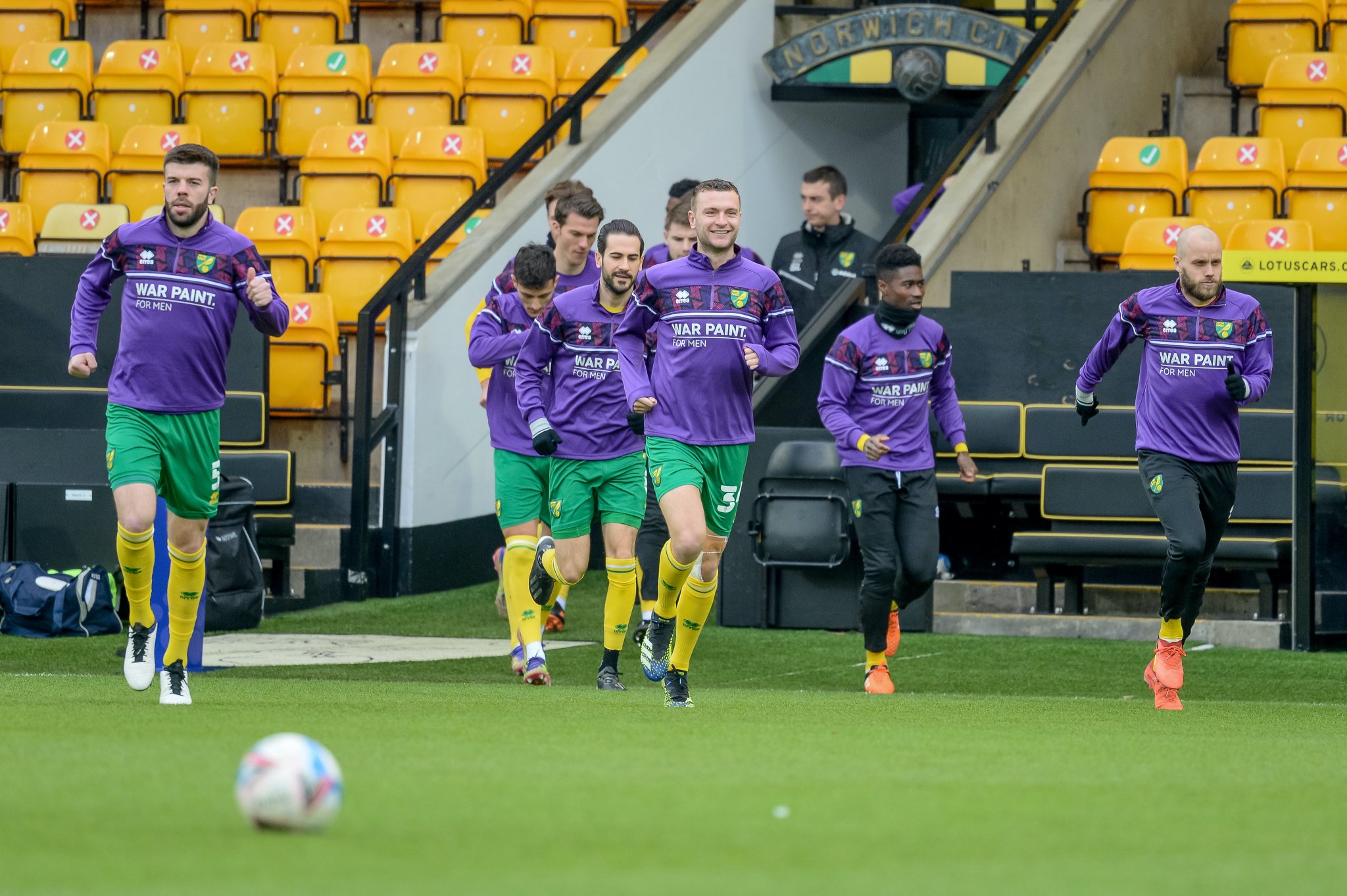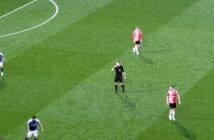While many teams have utilised the tactical system of ‘total football’, it was made famous by Johan Cruyff and Ajax in the early 1970s.
‘Total football’ is the idea that any outfield player can take over the role of any other player in a team, thus creating a fast and fluid movement that opponents struggle to predict and defend against.
Around 50 years on from it’s heyday in Amsterdam, Norwich City have revived it in the Championship as they look to seal an immediate return to the Premier League.
The Canaries are largely going against the second-tier status quo. Rather than playing a physical, aggressive style of football that focuses on long balls from defenders towards target man strikers, Daniel Farke’s side focus on fast transitions and slick counterattacks.
But the unpredictable nature of Norwich’s movement is what makes them so exciting to watch.
By default, Norwich play a 4-2-3-1 formation. At full strength, the attacking trio of Todd Cantwell, Emi Buendia and Teemu Pukki remain omnipresent, while the likes of Oliver Skipp, Max Aarons and Grant Hanley are key players in the German’s system.
They all have their set positions. Cantwell on the left-wing and Buendia on the right in front of the two full-backs, with Skipp in a double pivot alongside Lukas Rupp or Kenny McLean. Pukki slots furthest up the field as the central striker.
But as soon as the whistle is blown for kickoff, that set formation evaporates.
A good example of this is Norwich’s full-backs. Last season, Jamal Lewis and Max Aarons were the shining light in a disastrous season for the Canaries, with the former earning a summer move to Newcastle and the latter almost joining FC Barcelona as a result of their stellar performances. This is because Farke’s system allows them to flourish going forward.
There’s less of an emphasis on their defensive responsibility because, when they decide to push forward, other players can naturally slot into their position.
When debutant left-back Dimitris Giannoulis found space to exploit down Middlesbrough’s right side, in a 0-0 stalemate at Carrow Road on Saturday, Skipp would often be the one to drop back from the left midfield pivot to cover his position should Greek international be dispossessed, providing defensive cover.
Mario Vrancic is another strong example. The 31-year-old sits in the heart of midfield ahead of the double pivot. But when he has the freedom to bring the ball forward himself, the players around him will drop behind to provide cover – even the likes of Cantwell, Buendia and Pukki if they find themselves in the right position.
However, it’s the attacking trio that provides the best showcase of Norwich’s ‘total football’ adaptation. When Norwich are playing out from the back, Buendia and Cantwell can drop as far back as the defensive line so they can carry the ball forward into attacking areas. They have the best dribbling and passing range of any player in the team, and Farke capitalises off their strengths.
Pukki, as a striker, is of course set to play further forward than anyone else in Norwich’s team, but he often drops behind the wingers, and even Vrancic, where he can either make subtle runs that catch out the opposition or set up one of his teammates with a pinpoint pass.
When out of possession, Norwich press heavily. Their players work in groups to track the ball, with the two midfielders in the double pivot working the hardest to win the ball back. They have the freedom to move out of position and pressurise whichever opposition player is on the ball because those around them will slot into the default midfield duo. With the two full-backs in a more defensive position when out of possession, this responsibility usually falls to Cantwell, Buendia or Vrancic.
But, while this tactic can be unplayable when Norwich are at their best, it can be disastrous when they’re off form. That’s what Middlesbrough found out when they arrived at Carrow Road in Saturday’s lunchtime kickoff.
Neil Warnock put out, what was on paper, an incredibly defensive lineup, choosing four natural full-backs and no out-and-out striker in a 4-3-3 formation.
But the Boro didn’t sit back and defend – they attacked the Canaries. They used an incredibly high and intense press of their own, which most teams don’t dare to do when they play at Carrow Road. That’s largely because Norwich’s pace and pinpoint passes slice them open within a split second, and the likes of Teemu Pukki and Emi Buendia are ruthless in front of goal at this level.
But Warnock’s side were so incredibly organised that there were no gaps for Norwich to exploit. Middlesbrough’s midfield trio remained watertight when off the ball, and their transitions were so quick that Farke’s men were caught out when they weren’t in their natural positions.
Once the Teessiders grew into the game, their confidence skyrocketed while Norwich’s diminished. They just couldn’t break down Middlesbrough’s shape, finishing the game without a single shot on target, while the visitors weren’t able to capitalise on their chances caused by the Canaries’ defensive mishaps. Norwich’s centre-backs, usually mobile and dynamic, moved like ocean liners when pressed by the Boro’s attack.
Ultimately, Emi Buendia’s red card in the 67th minute was the end of the game for Norwich. Middlesbrough capitalised off the Argentine’s notoriously short temper, seeing him receive a second yellow card for catching George Saville with the follow-through of a mistimed tackle.
Vrancic was brought off for a replacement winger in Przemysław Płacheta, reducing the numbers in Norwich’s midfield from three to two, and thus leaving them unable to use the ‘total football’ style effectively. Players were caught out of possession with no defensive backup, and the Canaries’ attackers couldn’t function without that third body in midfield.
Of course, Farke shouldn’t change his system given the immense success he’s had in charge at Carrow Road. There’s a reason why they have a four-point lead at the top of the Championship, and why their start to this campaign was better than any other in Norwich history.
The Canaries have only suffered two defeats since the start of October, but while their approach carries significant reward, the risk can be equally as high. Maintaining that consistency is the difference between a Championship quality side and a Premier League one.
Follow us on Twitter @ProstInt
[columns]
[column size=”1/2″][blog type=”timeline” posts=”10″ cats=”1178″ heading=”Norwich” heading_type=”timeline” /][/column]
[column size=”1/2″][blog type=”timeline” posts=”10″ cats=”2836″ heading=”Middlesbrough” heading_type=”timeline” /][/column]
![Prost International [PINT]](https://prostinternational.com/wp-content/uploads/2021/08/PINTtFontLogoRoboto1536x78.jpg)



